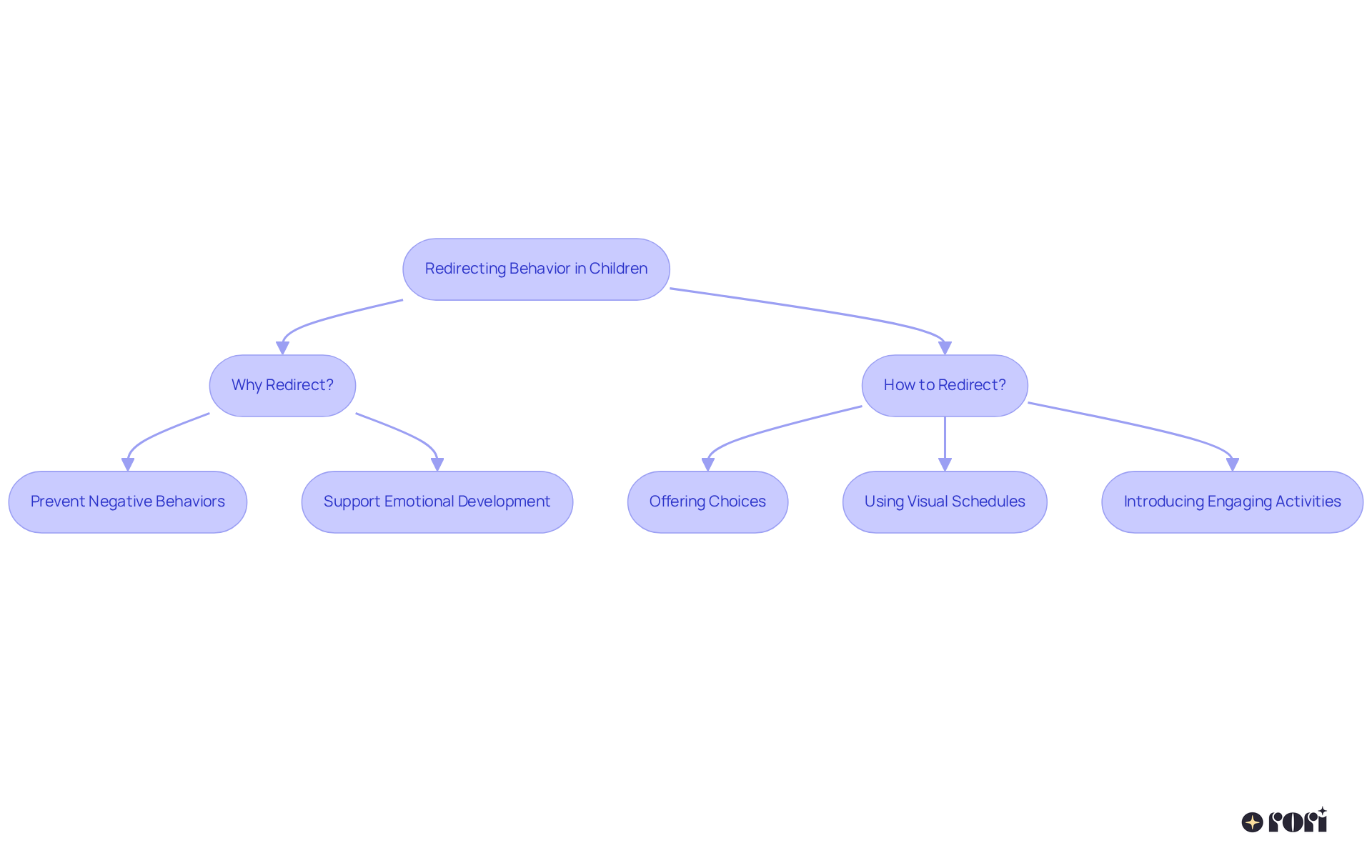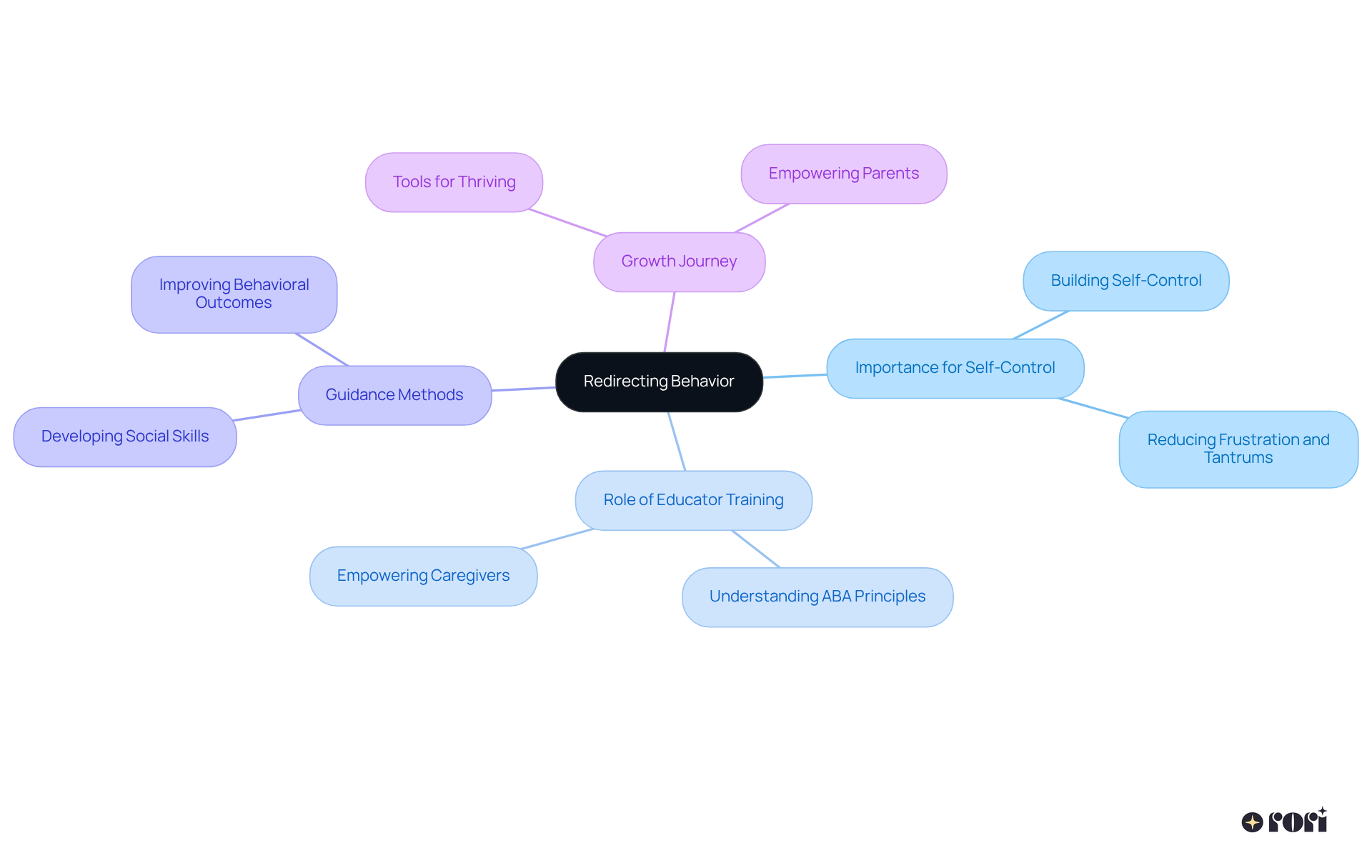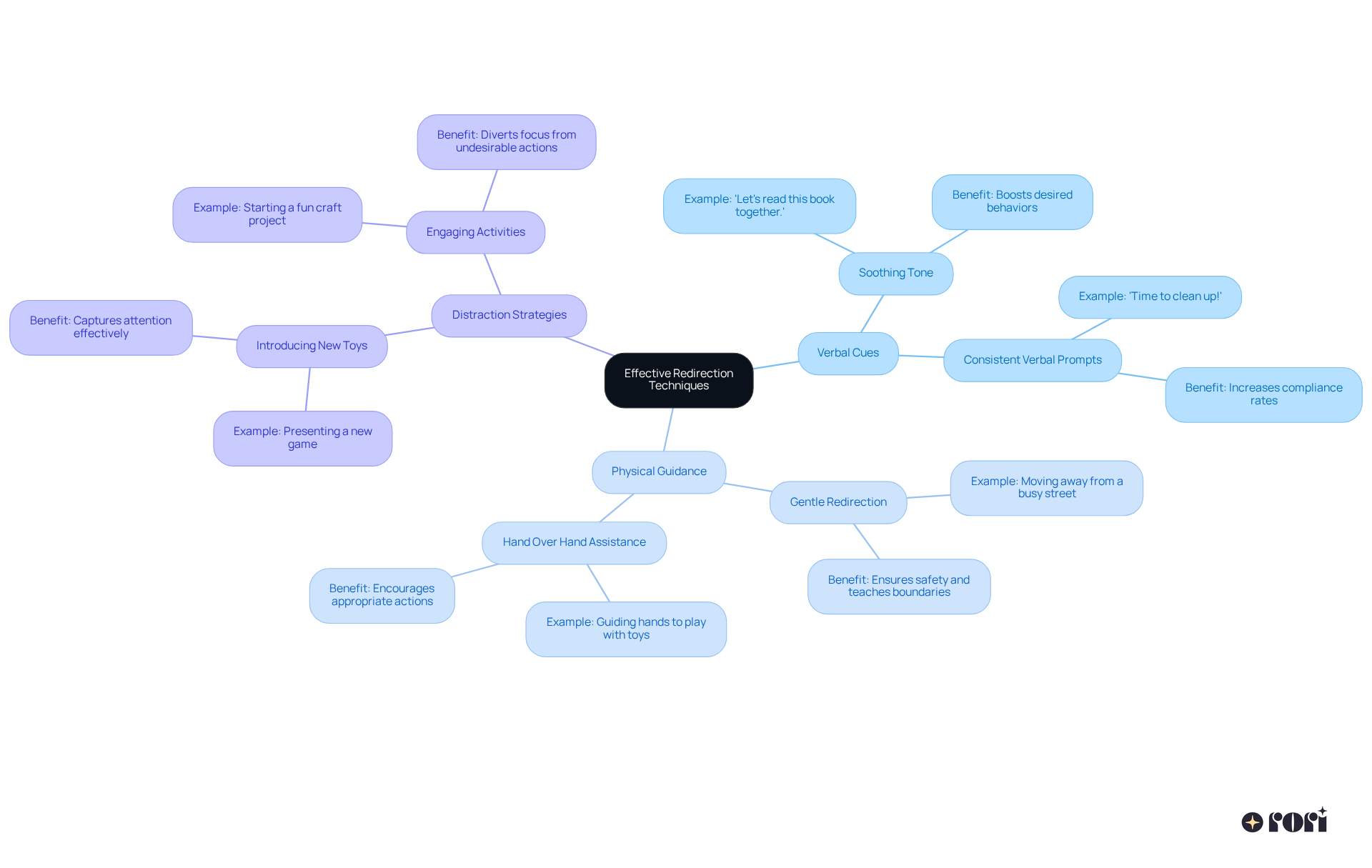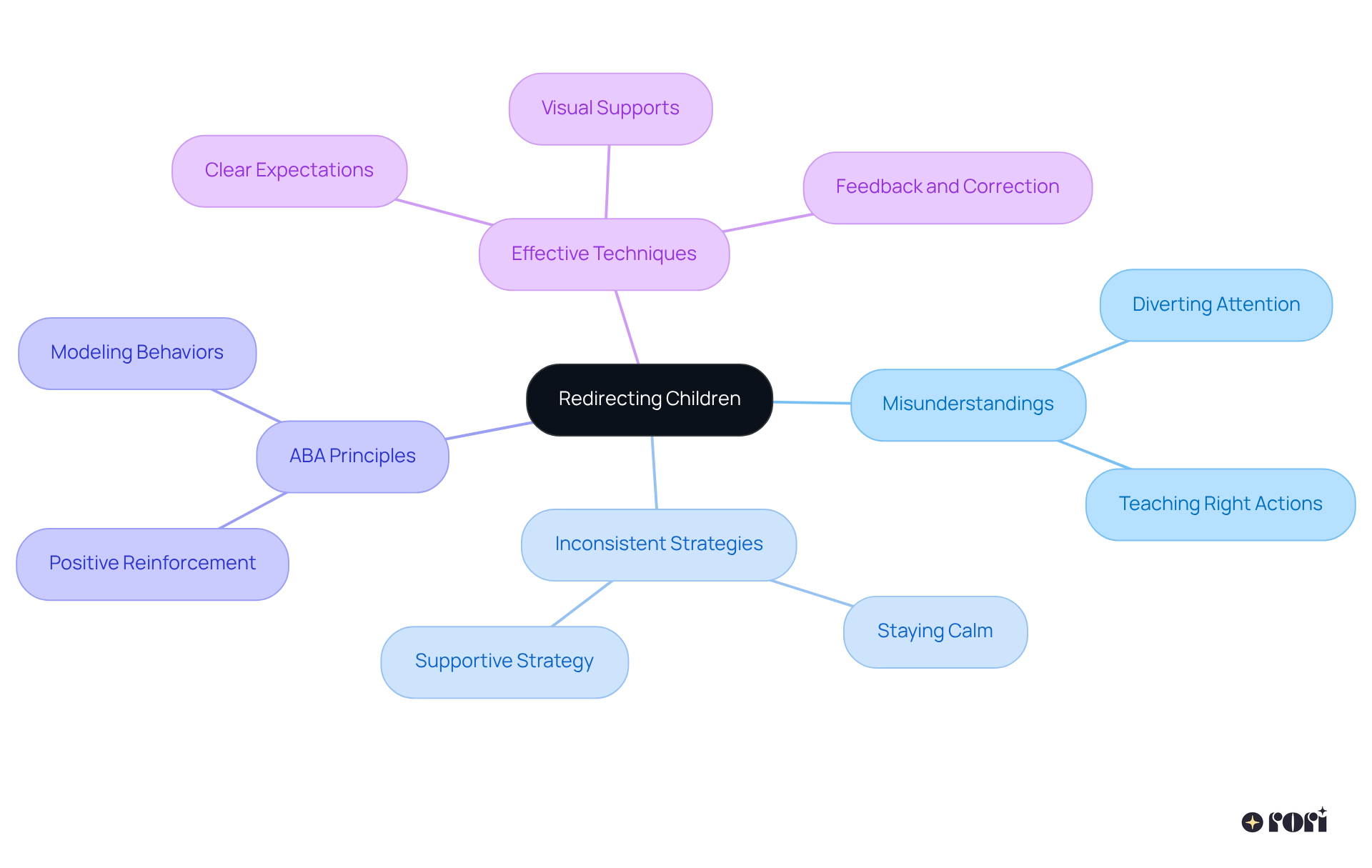Redirecting a child is all about gently guiding their attention away from unwanted behaviors and towards more appropriate alternatives. This is so important for their emotional and social development! 🌱 The article highlights how effective redirection techniques, based on Applied Behavior Analysis (ABA), can not only reduce negative behaviors but also empower children to express their needs in a constructive way.
Ultimately, this fosters a positive learning environment and helps enhance their self-regulation skills. Let’s explore this together! By understanding these techniques, we can create a nurturing space where our little ones can thrive. We're here to help you every step of the way!
Understanding the intricacies of child behavior can feel overwhelming for parents and educators. Redirecting a child isn't just about shifting their focus; it's a crucial strategy that nurtures emotional growth and develops essential life skills. As caregivers navigate the complexities of guiding young minds, a common question arises: how can they effectively use redirection techniques that not only manage behavior but also empower children to flourish?
Let’s explore this together! This article dives into the core concepts of redirecting behavior, highlighting its importance and sharing practical strategies to support child development. By connecting on this journey, we can discover ways to help our little ones thrive and grow.
Understanding what does it mean to redirect a child involves guiding their attention from unwanted activities to more suitable options. This proactive approach is essential for parents and educators who want to prevent negative behaviors from escalating. For example, if a child is tossing toys, a caregiver might redirect them by suggesting an alternative activity, like building with blocks. Not only does this method address immediate behavior, but it also teaches valuable lessons about appropriate actions in different contexts, in line with the principles of Applied Behavior Analysis (ABA).
But why is it important to understand what does it mean to redirect a child? It goes beyond just correcting actions; it plays a crucial role in youth development. By consistently redirecting a child, caregivers help them understand what does it mean to redirect a child in order to express their emotions and needs in constructive ways. Effective ABA strategies for redirection include:
Research shows that these techniques can significantly boost communication skills and emotional regulation.
Moreover, guiding actions fosters a positive learning environment, encouraging children to explore and engage with their surroundings safely. This is especially beneficial for young learners, as it lays the groundwork for long-term success in their educational journey. It's vital for caregivers to be reliable in addressing behaviors; they should encourage positive actions and set clear expectations to help children learn appropriate responses. By educating themselves on ABA principles, caregivers can make informed decisions that positively impact their children's growth. Ultimately, when considering what does it mean to redirect a child, it isn’t just about managing actions; it’s about nurturing a child's ability to thrive socially and emotionally, leading to better behavioral outcomes and enriched family dynamics. Let’s explore this together!

Redirecting behavior is so important for helping young individuals build self-control. By offering alternative options, supporters can really cut down on frustration and tantrums. This approach not only fosters a supportive learning environment but also highlights what kids can do instead of what they can't. This shift boosts their sense of agency and confidence.
Educator training plays a key role here. It equips supporters with a solid understanding of ABA principles and strategies, empowering them to make informed choices that positively impact their children's progress. With this knowledge, caregivers can enhance the support they provide, complementing professional interventions and promoting consistency at home. This ultimately reduces stress and improves family dynamics.
Research shows that effective guidance methods can help young people develop vital social skills and positive interactions, steering clear of undesirable behaviors that could become ingrained habits. For example, case studies reveal that young individuals receiving consistent guidance often show improved self-regulation and emotional control over time. Plus, statistics indicate that kids who use guidance techniques tend to achieve better behavioral outcomes, highlighting the importance of this approach in early development.
Ultimately, understanding what does it mean to redirect a child isn't just about managing actions; it's about guiding young individuals on a journey of growth and learning. It equips them with the tools they need to thrive while empowering parents to effectively support their children's development. Services like group therapy and individual therapy provided by Rori Care can be valuable resources in this process. Let’s explore this together!

Effective redirection techniques demonstrate what does it mean to redirect a child and include verbal cues, physical guidance, and distraction strategies, all of which align with the principles of Applied Behavior Analysis (ABA). For instance, when a little one shows unwanted behavior, caregivers can gently address what does it mean to redirect a child by suggesting different activities with a soothing tone, like saying, 'Let's read this book together.' This approach not only boosts desired behaviors but also empowers caregivers with the tools to support their child's development effectively. Research shows that using positive language can significantly enhance a child's ability to shift focus, which relates to what does it mean to redirect a child, with studies indicating that consistent verbal cues increase compliance rates among youngsters.
When considering what does it mean to redirect a child, physical redirection might involve gently guiding them away from potentially dangerous situations, such as moving them away from a busy street. This method ensures safety while teaching kids about appropriate boundaries. Additionally, distraction techniques, like introducing a new toy or game, can effectively capture a child's attention and help demonstrate what does it mean to redirect a child away from undesirable actions.
Understanding what does it mean to redirect a child is vital for reinforcing positive behavior over time through consistent application of these techniques. A case study highlighted that understanding what does it mean to redirect a child involves providing consistent verbal prompts and physical assistance, which can lead to better emotional regulation and fewer meltdowns. Plus, the benefits of educating family members, such as improved support and informed decision-making, play a crucial role in implementing these strategies effectively. By understanding ABA principles, caregivers can create a nurturing environment that encourages children to learn and grow while managing their emotions, which raises the question of what does it mean to redirect a child, ultimately leading to better behavioral outcomes. Let’s explore this together!

Misunderstandings about what does it mean to redirect a child can often lead to misconceptions that might hold back its effectiveness. Many people think that guidance is just a way to divert attention, but what does it mean to redirect a child is actually about teaching children the right actions while keeping them engaged. This approach not only fosters understanding but also encourages positive behavior changes.
Another challenge we face is the inconsistent way rerouting strategies are applied. Caregivers often struggle to stay calm and consistent, especially during frustrating moments. It’s important to remember that guidance should be viewed as a supportive strategy, not a punishment. For instance, case studies have shown that respectful guidance—brief, consistent, and systematic correction along with feedback—can really make a difference in student behavior, particularly for those who learn differently.
By tackling these challenges and clearing up misconceptions, caregivers can gain insight into what does it mean to redirect a child in a more informed and compassionate approach. This ultimately leads to better outcomes for children. Empowering caregivers with a deeper understanding of ABA principles and strategies boosts their ability to provide the right support at home. This complements professional interventions and promotes consistency.
Let’s emphasize the importance of clear expectations, positive reinforcement, and specific ABA strategies, like modeling appropriate behaviors and using visual supports. These can really enhance the effectiveness of redirection techniques. Additionally, creating a supportive therapeutic environment is crucial for learning and healing, making redirection a vital part of a child's development.
Together, we can explore these ideas further and share experiences that can help us all along the way!

Understanding what it means to redirect a child is essential for fostering their emotional and social development. This proactive approach not only helps in managing unwanted behaviors but also empowers children to express their needs constructively. By employing effective redirection techniques, caregivers can create a nurturing environment that promotes positive growth and learning.
Throughout this journey, we’ve highlighted key strategies for redirecting behavior, such as:
These methods align beautifully with the principles of Applied Behavior Analysis (ABA) and have shown to enhance communication skills, self-regulation, and emotional control in our little ones. Addressing common misconceptions and challenges surrounding redirection reminds us of the importance of consistency and clarity in applying these techniques.
Ultimately, redirecting a child is more than just a behavioral management tool; it’s a vital component of their developmental journey. By embracing the techniques we’ve discussed and committing to a supportive approach, caregivers can significantly impact their children's ability to thrive. This journey of growth not only benefits children but also enriches family dynamics. So, let’s continue exploring and implementing effective redirection strategies together—because every step we take makes a difference!
What does it mean to redirect a child?
Redirecting a child involves guiding their attention from unwanted activities to more suitable options, helping them learn appropriate behaviors in different contexts.
Why is redirecting behavior important for children?
Redirecting behavior is crucial for youth development as it helps children express their emotions and needs constructively, preventing negative behaviors from escalating.
What are some effective strategies for redirecting a child?
Effective strategies include offering choices, using visual schedules, and introducing engaging activities that capture a child's interest.
How does redirection impact a child's communication skills?
Research shows that redirection techniques can significantly boost communication skills and emotional regulation in children.
What role does redirection play in creating a positive learning environment?
Guiding actions through redirection fosters a positive learning environment, encouraging children to explore and engage with their surroundings safely.
How can caregivers ensure they are effectively redirecting a child's behavior?
Caregivers can ensure effective redirection by being reliable in addressing behaviors, encouraging positive actions, and setting clear expectations.
What is the relationship between redirection and Applied Behavior Analysis (ABA)?
Redirection aligns with the principles of Applied Behavior Analysis (ABA), which emphasizes proactive strategies to manage behaviors and promote positive outcomes for children.
How does redirection contribute to a child's long-term success?
By consistently redirecting behavior, caregivers help children develop skills that lead to better behavioral outcomes and enriched family dynamics, laying the groundwork for long-term success in their educational journey.